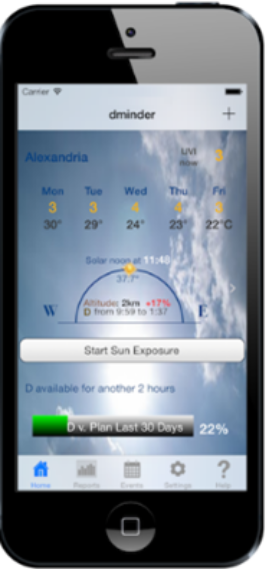
Greetings,
The newest COVID variant, XBB.1.5, is here. And it’s following the typical pattern of viruses: Each new variant is more transmissible than the last, but it is also less dangerous. Public health authorities are saying roughly 80% of Americans who’ve already been infected with COVID are likely to catch it again because this variant is so easy to transmit from one person to another.
Meanwhile, the flu has been going around like crazy. CDC said this flu season is the most severe in the last 13 years.
Is it COVID, the flu, or RSV? Well, they all are respiratory infections, have a similar list of symptoms and are treated about the same way. We usually can get the medications to you within 24 hours after you call us.
Let’s take a minute to highlight the “sunny” medication that nature gives all of us: vitamin D.
Humans were designed to live in the sun; sunshine’s UVA and UVB rays bring many more benefits to our bodies than just the creation of vitamin D.
Here’s a short list:
- Near-infrared rays from the sun penetrate deep into our body and activate a protein (cytochrome c oxidase) which turns on the production of melatonin, the hormone that helps us go to sleep at night. Melatonin also is an anti-oxidant, helps keep us cancer free, and stimulates the immune system (hello flu, COVID, RSV).
- Nitric oxide is produced in response to UVA and this gives us more elastic arteries (vasodilation).
- Sunshine exposure modulates the human intestinal microbiome (gut health).
- Beta endorphins are produced when we are exposed to UVA and UVB. Endorphins are nice to have on board because these neurotransmitters alleviate pain and promote pleasure.

Our bodies make vitamin D from the sun’s rays and that gives us ammunition to fight infections and autoimmune diseases. Vitamin D produces more than 200 antimicrobial peptides; the one called cathelicidin is a naturally occurring broad-spectrum antibiotic.
The vitamin D3 we make from sunshine is for much more than just bone health – avoiding rickets in children and osteoporosis in adults. Here are my top 3 reasons for advocating for vitamin D3’s benefits:
1 – strengthens the immune system
2 – improves cognitive health
3 – turns on and off 300+ genes to keep us healthy
(And here’s an extra one for the guys: Vitamin D3 also acts as a natural testosterone booster; the male reproductive tract contains numerous receptors for vitamin D3.)
Q – I live in Arizona, so don’t I get plenty of vitamin D from the sun?
A – No, because actually we don’t get out in the sun much. And when we do, we slather on sunscreen. A 2001 study by the Environmental Protection Agency found that American adults spent 93% of their time indoors and only 7% of their days outside. And it’s really hard to get this vitamin from food; Mother Nature just didn’t put much there. A 2014 survey by the CDC indicated that 81% of children were low in vitamin D, and 95% of adults. Yikes!
If we can’t get enough D from the sun, then we need to supplement.
When we run a blood test for vitamin D, what’s a good number? Depends on who is doing the talking. A normal vitamin D3 level in sunny countries is considered to be in the 54-90 ng/mL range, say vitamin D experts William Grant and Michael Holick. Then there’s Dr. Paul Saladino who went to Africa to study the Hadza tribe because they are among the best still-living representations of the way humans have lived for tens of thousands of years. Saladino says their vitamin D averages around 46 to 48 ng/mL, which he thinks is an evolutionarily appropriate level and probably good for most humans.
Tip: dminder is a nifty app to install on your phone. It works anywhere in the world and will tell you exactly when vitamin D is available and how to manage your time in the sun.
Like so many nutrients, vitamin D acts in concert with other nutrients. Calcium, vitamin K2, and vitamin D3 are a trio that works synergistically. Vitamin D controls the absorption of calcium into the blood, and vitamin K2 controls where that calcium ends up – in your bones and teeth, not in your arteries.
In today’s culture, we don’t get much K2 in our diet because we don’t typically eat foods that have it. When was the last time you had natto, eel, beef liver, or Munster cheese? (Vitamin K1, the “coagulation vitamin,” comes from mostly leafy green vegetables and isn’t involved in escorting calcium around the body.)
So, one way or another, get your vitamin D3 and K2. It’s a key part of the arsenal to defend against viral infections headed our way.
Want coaching on what prevention looks like so you are ready for the day XBB.1.5 or the next variant gets you? Or have they already reached you? Maybe you are struggling with long COVID? Call us at 602-565-9273. We’re here to help.
Dr. Linda Wright
Help us spread the word about Arizona Real Health by liking and sharing our social media pages with your friends and family!


Feel Free to Ask us Any Questions!
Dr. Linda Wright, Owner/Director
(602) 565-9273

